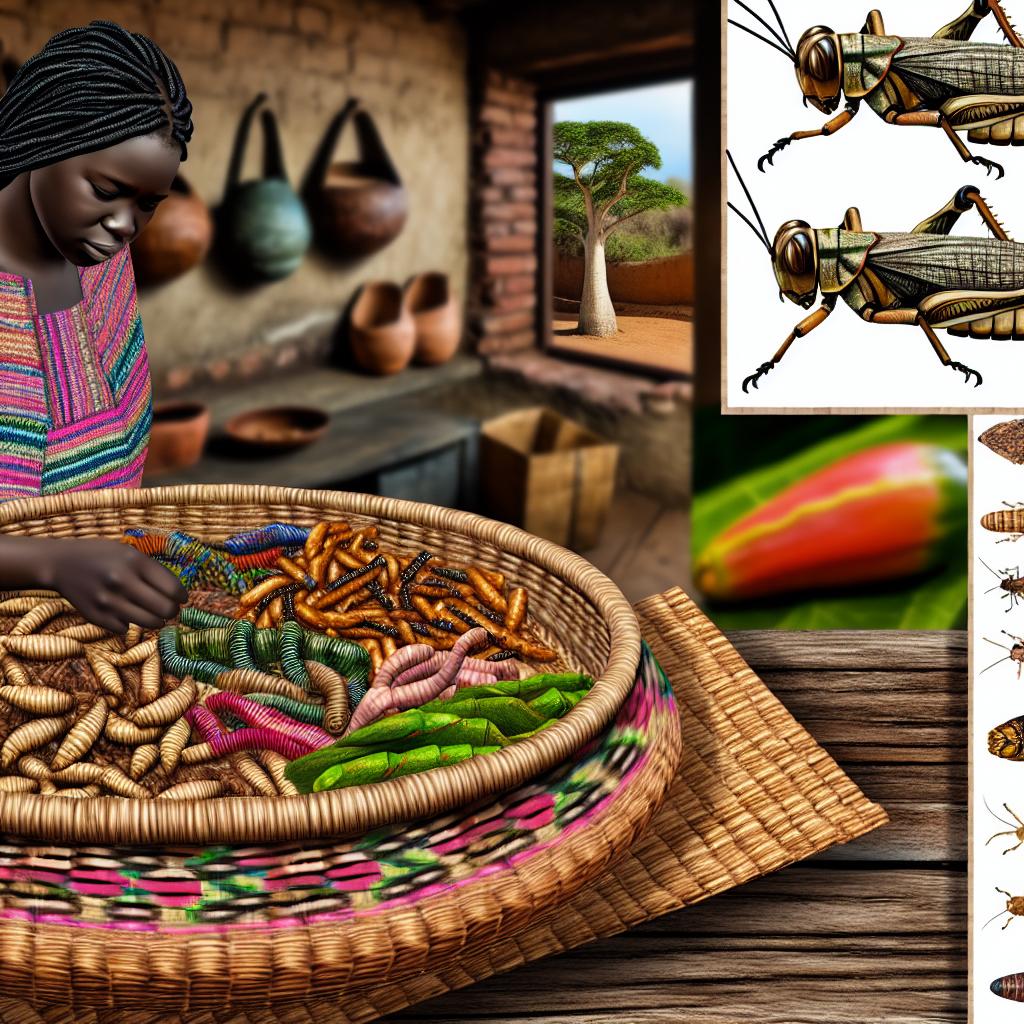The Nutritional Value of Insects in Traditional African Diets
In many traditional African societies, insects have been a crucial component of the diet, primarily attributed to their substantial nutritional benefits. They serve as an outstanding source of protein, essential amino acids, and possess a beneficial fatty acid profile, which makes them an important dietary component. Commonly consumed insects include caterpillars, locusts, grasshoppers, and termites. These are not only high in protein but also encompass critical minerals and vitamins such as iron, zinc, and vitamin B12, essential for maintaining good health.
Cultural Significance and Harvesting Techniques
The practice of consuming insects is intricately woven into the cultural fabric of various African communities. For many, it’s more than just sustenance; it reflects cultural identity and tradition. The consumption of insects is often tied to seasonal abundance and is regarded as a culinary delicacy within numerous communities. This practice is not random but rather systematic with ecological mindfulness. Various techniques are employed to harvest insects, allowing the practice to remain sustainable and respectful of the ecosystem balance.
For instance, termite alates are collected during the rainy season when they swarm and are ready to mate. This is not only an opportune moment to gather them in large quantities but also ensures that the adult termites have already reproduced, sustaining their population. Similarly, caterpillars are harvested in different life stages, which are determined to be the most abundant and nutritionally optimal. These practices reflect a deep understanding of ecological cycles and emphasize a harmonious relationship with nature.
Preparation and Consumption
The manner in which insects are prepared and consumed highlights the depth of traditional culinary knowledge. Insects are typically transformed into dishes that are not only nutritious but also delectable. Methods of preparation include roasting, smoking, sun-drying, and boiling. These methods serve multiple purposes: they enhance the taste, ensure the maximum retention of nutrients, and eliminate any potential pathogens. By incorporating insects with staple foods such as grains and vegetables, these meals become not only balanced but also rich in vitamins and minerals.
The transmission of this culinary knowledge has occurred over generations, ensuring that safety and gastronomic enjoyment are paramount. Through these traditional methods, communities have managed to continue incorporating insects into their diets safely and pleasurably.
Sustainability and Economic Opportunities
Insect farming and consumption offer substantial promise as sustainable food sources. The environmental footprint of insect rearing is significantly lower when compared to conventional livestock. Insects require a fraction of the land, water, and feed and produce far fewer greenhouse gases. This makes them an environmentally friendly option that is more sustainable than many other protein sources.
These sustainable practices do not only have environmental benefits but economic ones as well. The collection and commercial trade of edible insects provide numerous economic opportunities for local communities. This practice supports both local economies and individual livelihoods through the creation of new income streams. It has the potential to empower communities by encouraging grassroots entrepreneurship surrounding insect products.
Promoting Edible Insects Globally
Globally, there is an increasing interest in including insects within diets as a means to sustainably address the growing food demands of the future. Research efforts and international collaborations are steadily exploring ways in which traditional African practices can be scaled up and adapted for broader use. Various global organizations, including the Food and Agriculture Organization (FAO), are actively encouraging the use of edible insects as a viable food and feed option based on research supporting their nutritional merits and environmental advantages.
Understanding the incorporation of insects in traditional African diets sheds light on the benefits related to nutritional security and the preservation of cultural heritage. The insights gathered from these practices potentially hold the key to addressing some of the pressing food resource challenges faced worldwide. Moreover, they demonstrate that learning from traditional knowledge systems could contribute significantly to achieving sustainable development goals related to food security.
In conclusion, the role of insects in traditional African diets is not only a testimony to the rich cultural heritage but also an example of a sustainable, economically viable, and nutritionally beneficial food source. As they continue to be studied and possibly integrated into wider food systems, these practices exemplify how localized knowledge can have far-reaching impacts on global food sustainability and security.

